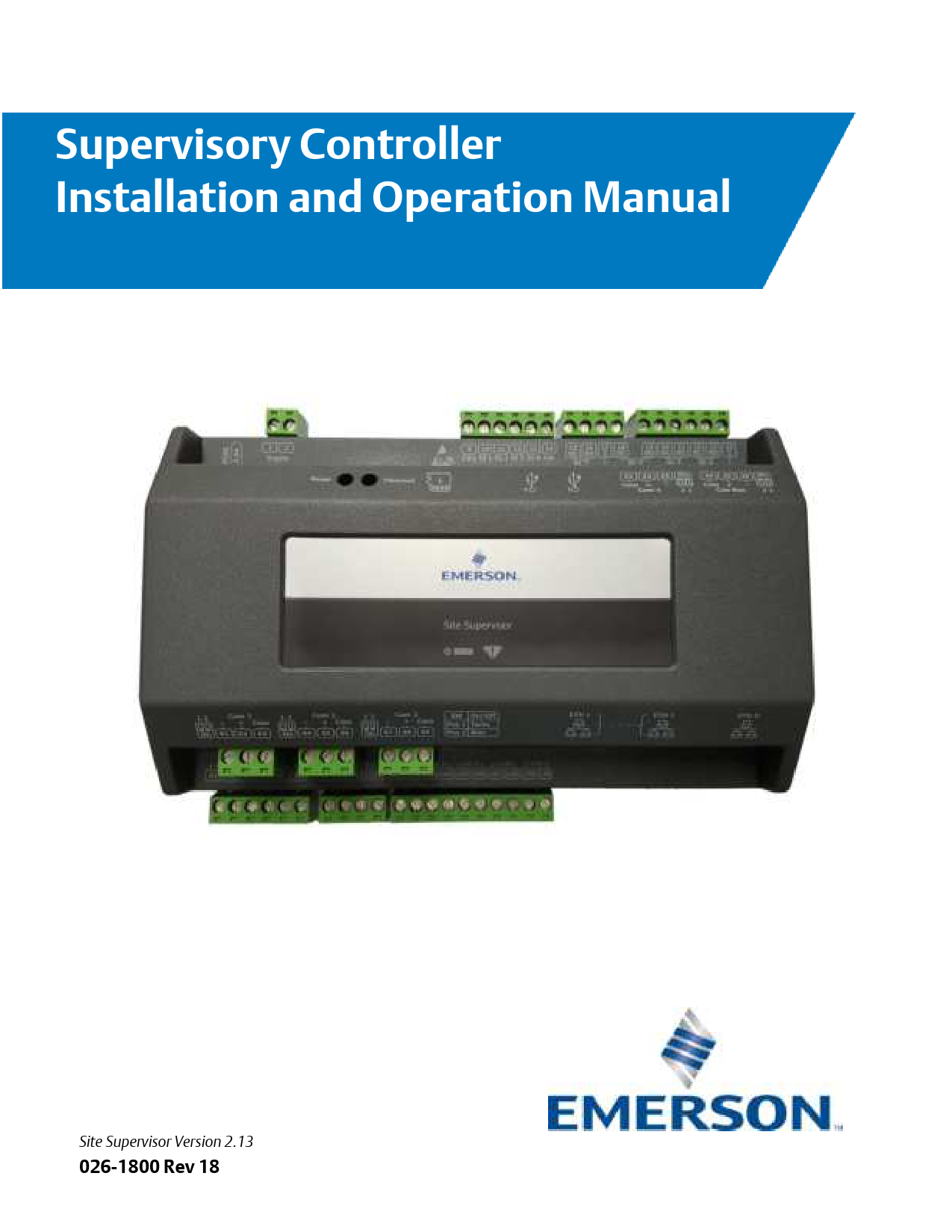This document guides the installation and operation of the Emerson Site Supervisor, a comprehensive control system for modern building management.
The Site Supervisor system offers advanced capabilities for energy management, precise control of HVAC and refrigeration systems, and efficient lighting management. It enables facility managers to monitor energy consumption, implement demand reduction strategies, and optimize system performance to lower utility costs.
Explore detailed sections on hardware, navigation, software features, alarm configuration, and wiring examples for seamless integration and effective utilization.
